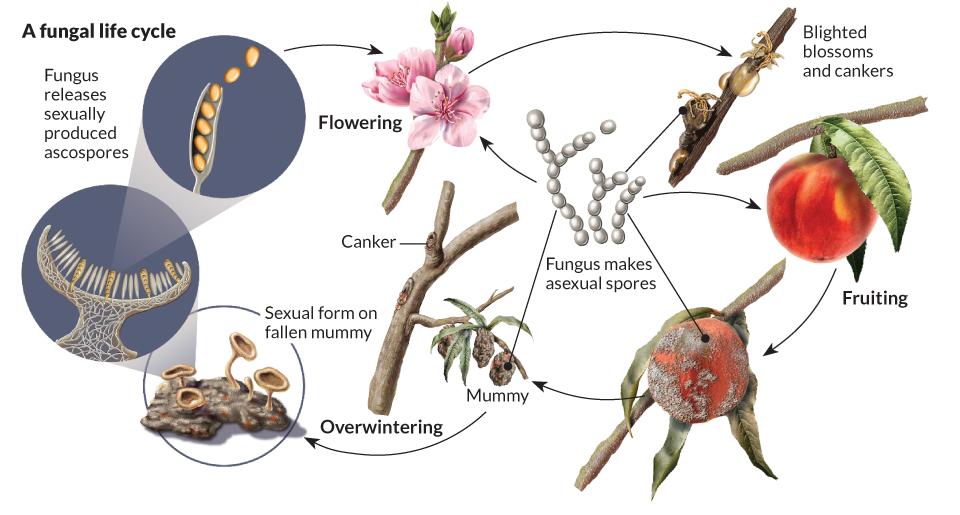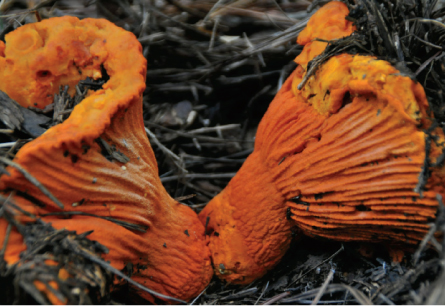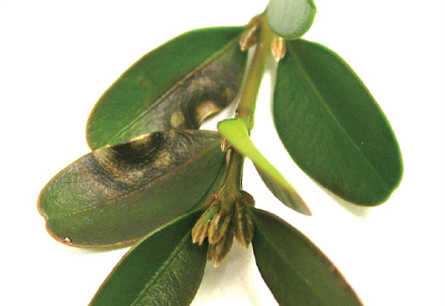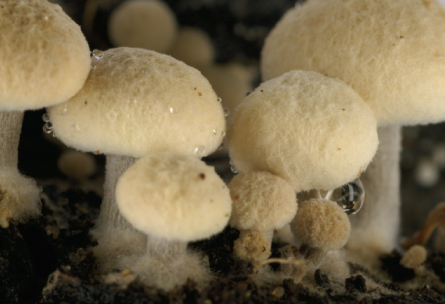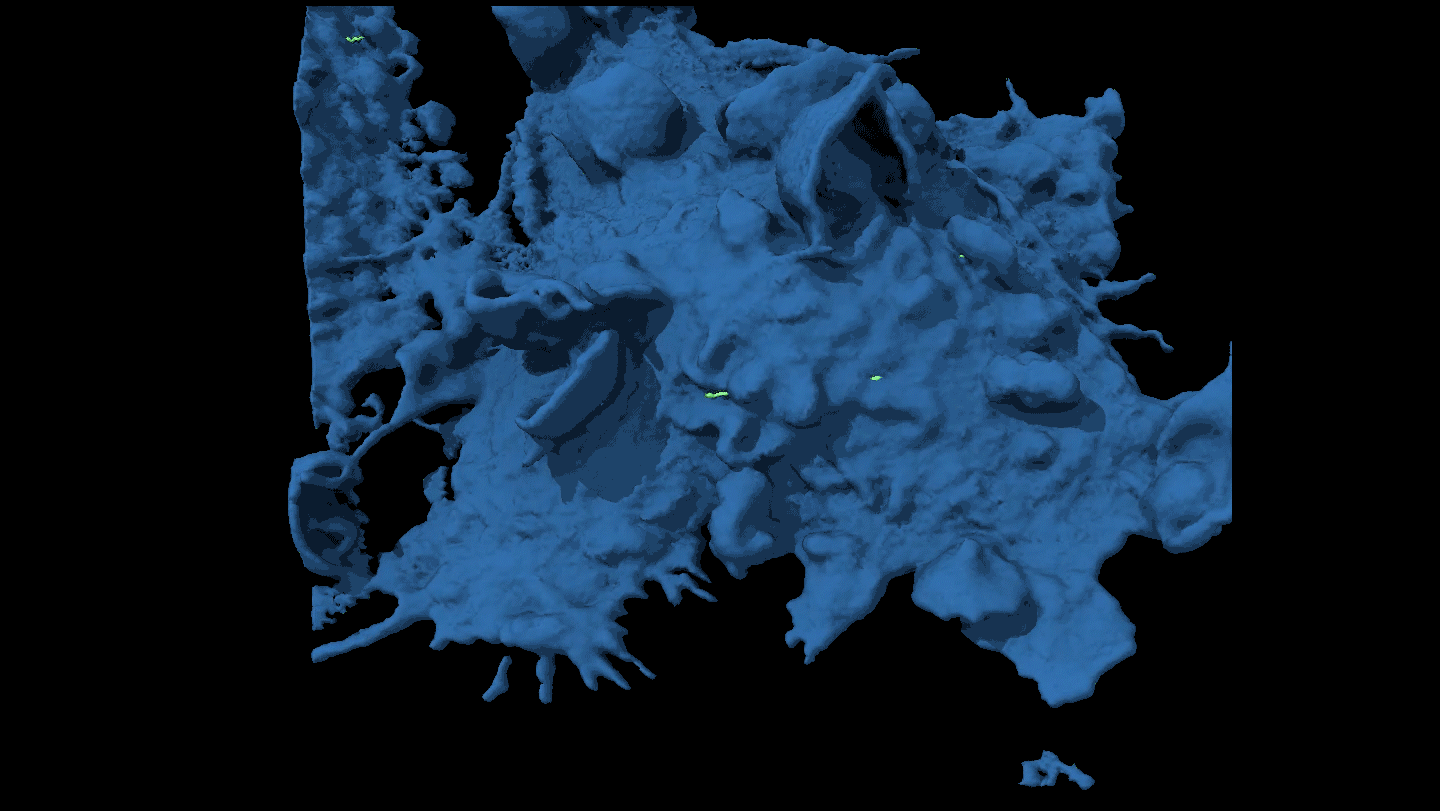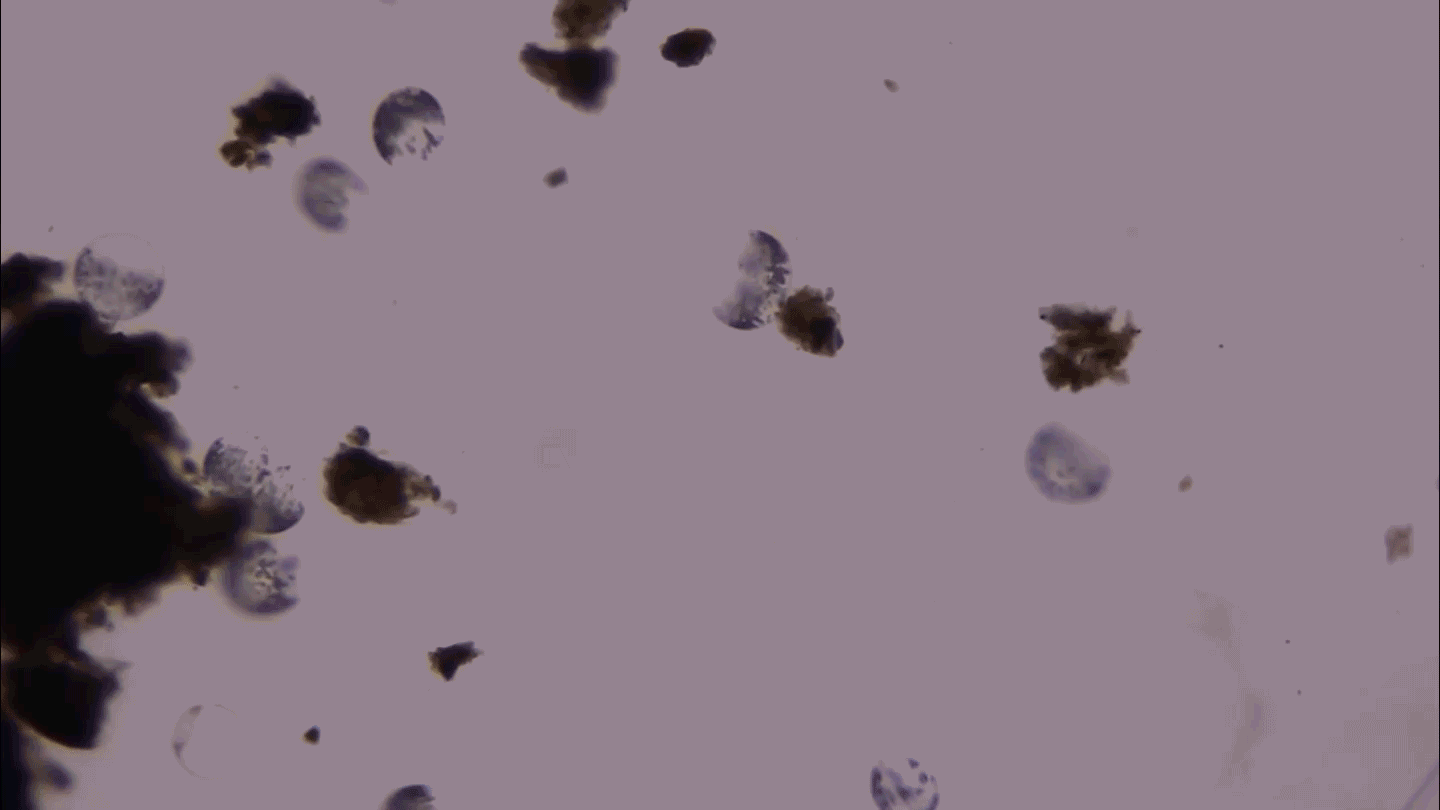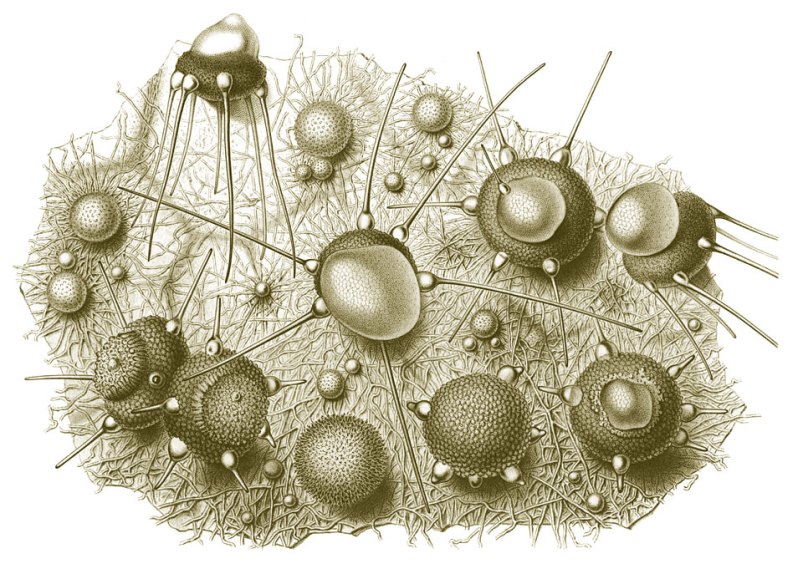
DEFINING A KINGDOM In the peculiar, shape-shifting world of fungi (Erysiphe guttata shown), a rebellion has broken out against the traditional way of naming species.
L. R. AND C. TULASNE/SELECTA FUNGORUM CARPOLOGIA 1861
To a visitor walking down, down, down the white cinder block stairwell and through metal doors into the basement, Building 010A takes on the hushed, mile-long-beige-corridor feel of some secret government installation in a blockbuster movie.
It’s not open to sightseers, but it’s far from secret. No jut-jawed military escort leads the way; biologist Shannon Dominick wears a striped sweater as she strolls through this Fort Knox of fungus, merrily discussing certain specimens in the vaults that are commonly called “dog vomit fungi.”
This basement on the campus of the Agricultural Research Service in Beltsville, Md., holds the second largest fungus collection in the world, with at least 1,000,000 specimens. Snuggled into exquisitely customized boxes and folders stored in high banks of institutional-beige metal cabinets are organisms that can glow in the dark, turn living ants into leaf-biting zombies, fetch thousands of dollars per pound at gourmet food shops or snarl international commodities markets.
It may look like the ultimate triumph of human order over natural chaos. But with fungi, it turns out that looks can be deceiving.
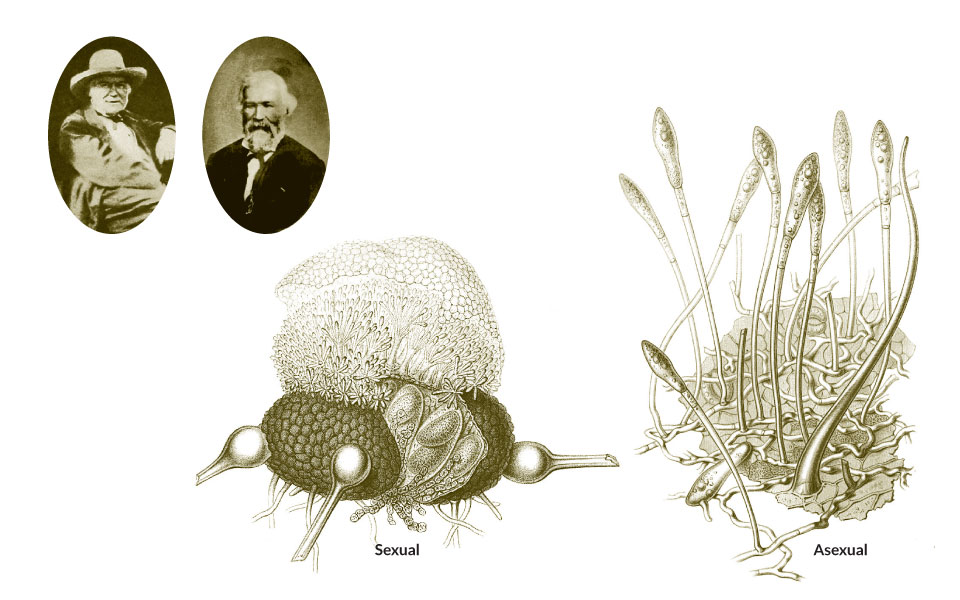
Many fungi are shape-shifters seemingly designed to defy human efforts at categorization. The same species, sometimes the same individual, can reproduce two ways: sexually, by mixing genes with a partner of the same species, or asexually, by cloning to produce genetically identical offspring.
The problem is that reproductive modes can take entirely different anatomical forms. A species that looks like a miniature corn dog when it is reproducing sexually might look like fuzzy white twigs when it is in cloning mode. A gray smudge on a sunflower seed head might just be the asexually reproducing counterpart of a tiny satellite dish–shaped thing. Just by looking at them, you’d never know.
When many of these pairs were discovered, sometimes decades apart, sometimes growing right next to each other, it was difficult or impossible to demonstrate that they were the same thing. So one species would get two names. Careful observation later suggested that officially different species are actually one, but the pairs of names remained. In fact, it soon became standard mycological practice to name many species twice — once for the sexual form, once for the asexual one.
“Zoologists,” says mycologist David Hawks-worth of Universidad Complutense de Madrid, “throw up their hands in horror.” For animals, one name covers the caterpillar and the butterfly it becomes. Botanists don’t just go naming a big tuft of fern fronds one thing and its separate, little green gametophyte another.
Yet until recently, mycologists had no choice. They knew full well that Aspergillus flavus, the powdery fuzz that taints peanuts with carcinogenic aflatoxin, is the exact same species as Petromyces flavus. They knew that Cordyceps takaomontana is also Isaria tenuipes. But faced with such a dizzying array of shape-shifters, they had to allow different names for things that might or might not be the same species.
Now, mycologists have a chance to set the record straight. A group of upstart scientists has rebelled against the dual-naming system, arguing that DNA analysis can endow fungi with a one-species, one-name system. Having won a major victory at a recent international scientific congress, they are poised to bring their field into a new era of genetic nomenclature. But however justified genetically, their project is not without perils.
What’s in a name
Naming a species is not just a Latin version of deciding that your new kitten seems more like a Snowball than a Bobo. It means deciding what an unknown entity, in the most basic sense, is. It hangs a living thing on a new twig of the tree of life, showing how shared characteristics reveal its relatedness to known forms, but also arguing that unique characteristics distinguish it from every species described so far.
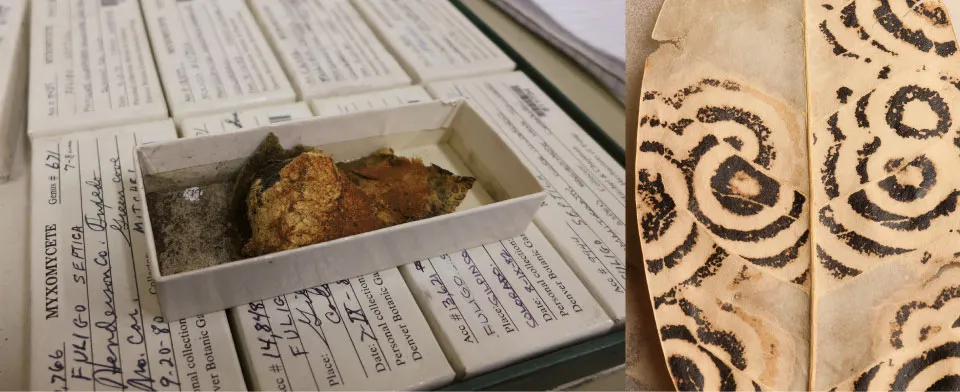
People have been guessing wrong for millennia about where fungi fit and what they are. Aristotle, and then about 2,000 years later, Carl Linnaeus, who fathered the system of two-word Latin names, divided the living world into the plantlike and the animal-like. Both put fungi among the plantlike.
Fungi finally got their own kingdom in the 1960s, and since the early 1990s genetic evidence has been building to place the fungal kingdom closer to animals than to plants. Analyses have also shown that some things that look and act like fungi actually belong in other taxonomic groups. Slime molds, including the dog-vomit–like specimens in the national collection, are not fungi but protists. And the Phytophthora, including the infestans species famous for causing the Irish potato blight, are closer to some kinds of algae than to fungi.
Linnaeus’ observational approach has been no match for a group of organisms that is often not what it seems.
“He was hopeless,” Hawksworth says. “He really lost the plot when it came to fungi.”
To be fair, evolution’s plot is hard to follow when all you’ve got to go on are five senses and the occasional chemical probe of the blobs, stalks, specks and toadstools that populate the fungal kingdom. But long before high-throughput DNA sequencing gave researchers the ability to essentially reassemble evolutionary history, there were hints of something funny going on.
By the mid-19th century, the French brothers Charles and Louis René Tulasne were fretting that what appeared under a microscope to be the same fungus sprouted into different kinds of reproductive forms. The brothers were “incredible observers,” Hawksworth says. By studying details in structures, the Tulasnes realized that at least some fungi sprouted more than one kind of reproductive “seed,” as they called the sexual and asexual products. The Linnaean system, assigning names to a species based on its supposedly uniform reproductive anatomy, was in trouble with fungi.
Story continues below sidebar
“But since the illustrious author,” the brothers wrote in 1861 of Linnaeus, “always completely abjured the use of magnifying glasses, and therefore scarcely ever tried to describe accurately either conidia or spores, we fear (may he pardon the statement) that he really knew very few seeds of either kind.”
At Beltsville’s Systemic Mycology and Microbiology Lab, mycologist Amy Rossman pulls out three tall volumes by the Tulasnes, with full-page plates of delicate line drawings of nubbled globes or fatly bending projections, the brothers’ minute records of fungal details. Rossman has donned white gloves to protect the old volumes, giving the book viewing a touch of past-century formality.
The lovely drawings failed to inspire much discussion about what to do with names. The brothers “became rather reclusive,” Hawksworth says. By and large, ”the mycological establishment didn’t want to accept what they were finding.”
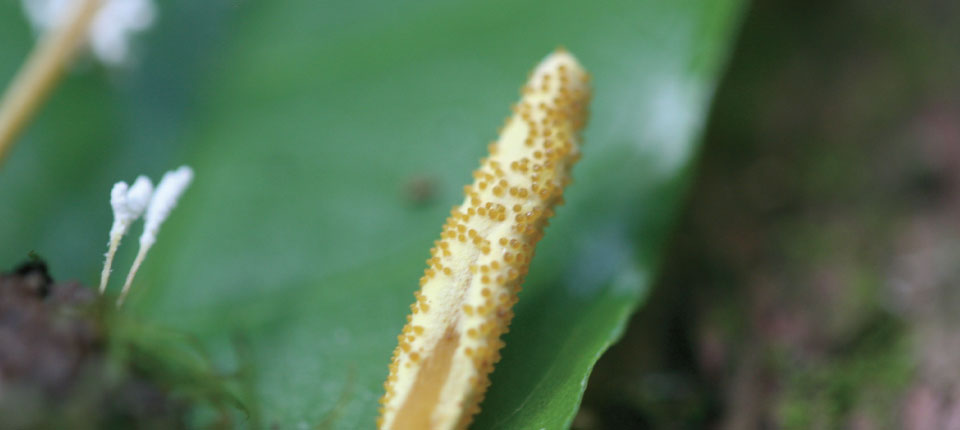
Before DNA tools, it was risky to claim that two fungal forms should be classified as identical species just because they were found in intimate contact. A parasitic species growing on its host could create the illusion of an alternative form. “People didn’t want to assume all those [claims] were correct after some unfortunate incidents were discovered,” Hawksworth says.
By the early 20th century it had become clear that many fungi could shift between one or more asexual forms, called anamorphs, and a sexual form called a teleomorph. But matching up the forms for the same species could be so difficult that mycologists devised what Lorelei Norvell of Portland, Ore., longtime editor in chief of the journal Mycotaxon, calls “a gentleman’s agreement” to use two names.
The same plump, color-coded volumes of legalese that govern how to name plants and algae also cover fungi, a carryover from the centuries of treating fungi as plants. “If you have ever read the Internal Revenue Code,” Norvell says of these rules, “it’s the same sort of thrill.”
By 1910, the code’s authors had agreed on an early version of a rule that has become so widely discussed that it’s just known as Article 59, as if it were a landmark ballot proposition. In two large fungal groups (Basidiomycetes and Ascomycetes that don’t make lichens), the rule allowed fungi to have both a sexual and an asexual name. For speaking of the whole organism, the sexual name dominated. In practice, researchers often focused on just one form or the other, and names proliferated.
Name changer
The two-name system for fungi inspired grumbling and various upsets, and Article 59 went through revisions and re-revisions. But the current turmoil started with the advent of molecular tools that at last allowed people to look fungi right in the DNA. Now it doesn’t matter if two specimens look entirely different and are never found together. If their DNA matches, they’re the same species. DNA also lets mycologists position all those species on the fungal evolutionary tree, even if there’s nothing more to go on than asexually reproducing fuzzes.
The movement eventually sparked outright rebellions. In 2006, Pedro Crous of the CBS-KNAW Fungal Biodiversity Centre in Utrecht, the Netherlands, penned a treatise on a big family of fungi, the Botryosphaeriaceae, and threw down a taxonomic gauntlet. He declared that he would not be citing both sexual and asexual names “even where both morphs are known.”
Jos Houbraken, also at the Fungal Biodiversity Center, maintains a noninflammatory tone no matter what a reporter asks about the tumult in nomenclature. When he made his own early switch to a one-name system, he says that reviewers of his submitted papers flagged the unconventional names as against the nomenclature code. In one case a reviewer objected that “pragmatism is not enough” to justify violating the rules. But other reviewers noted the off-code names supportively, and the journal published the paper.
An international committee chaired by Rossman attempted to devise ways to move from double names to single names. But by 2010, after four years, the committee was so deadlocked that its secretary used the term “dysfunctional” in his report in the journal Taxon.
Changing Latin names does have its risks. Not everyone who deals with fungi is a trained taxonomist: Gardeners staring at spots on their boxwood stems, food mycologists checking spoilage in baked goods or regulators writing quarantine rules might easily overlook important information if it’s filed under a different name from the one they’ve always used. Debates over Latin names can have real-world consequences.
The Melbourne incident
Actually changing fungal nomenclature rules requires discussion and voting at an international congress that is attended mostly by botanists. Thanks to the long tradition of treating fungi as plantlike, botanists get a vote on mycological matters. There has been mention of secession from the botanical code, but so far it’s just been talk.
In July 2011, about a dozen mycologists found themselves in Melbourne, Australia, at a special session held a week before the International Botanical Congress dedicated to nomenclature changes. Mycologists were outnumbered almost 20-to-1 by botanists, and after years of deadlock were “anticipating a bloody fight,” Norvell says. To top it off, many of the scientists were ill. “There was a crud going around,” she recalls. “Everybody had it, and there was coughing like you wouldn’t believe.”
The battle-weary secretary of the deadlocked committee, Scott Redhead of Agriculture and Agri-Food Canada in Ottawa, had prepared three options for changing the two-name rules. He started with the most radical and least likely to succeed: Change the old Article 59 to remove the option for double names. “Here we are, braced for discussion, braced for a fight, and they take a vote on the first option — delete 59 — and it passes.” Norvell says. “We just sat there looking like fish with our mouths open.”
A tiny band of rebels, with help from a foreign power, had suddenly overthrown a century-old regime. Not all mycologists were pleased.
The single-name motion may have passed among congress attendees, but support for it among fungal taxonomists overall ran only about 50-50, says mycologist Keith Seifert at Agriculture and Agri-Food Canada. “Our side happened to win the vote,” he says. “Many fungal taxonomists feel disenfranchised, cheated and angry.”
Hawksworth is more optimistic. “There was a lot of backlash initially,” he says, but some who objected strenuously are now settling down to the immense task ahead. And it is immense: Taxonomists have to sort out which former names will be the ones to use for perhaps more than 10,000 fungi.
Sometimes it’s simple. Seifert takes the example of Aspergillus flavus, the asexual name for the powdery fuzz that is notorious for releasing carcinogenic aflatoxins into stored peanuts, corn and other commodities. Farmers, regulation writers, doctors and industrial microbiologists have long used the name A. flavus, and they may not have even realized that a sexual form was discovered and named Petromyces flavus in 2009. The new version of Article 59 gives priority to older names, so Aspergillus, from 1729, trumps Petromyces, from 1973. And the second words in the names are the same. Big sigh of relief: The familiar name prevails.
In cases where a familiar name could get bumped by an obscure old one, the new code intentionally leaves a huge loophole: Taxonomists may petition to give priority to a widely used name regardless of its age. This is the part that worries Seifert.
“We need to get our buns in gear,” he says. Appeals to save names need to be ready for discussion in August at the 10th International Mycological Congress in Bangkok (where the botanists won’t be in attendance). Otherwise those names can’t be approved at the next botanical nomenclature congress, in 2017. Missing the August deadline would mean that cherished names couldn’t go before a nomenclature congress until 2023, creating a long period of uncertainty. Yet efforts to select names to preserve are lagging. “Despite what some people might hope, there is no going back,” Seifert says.
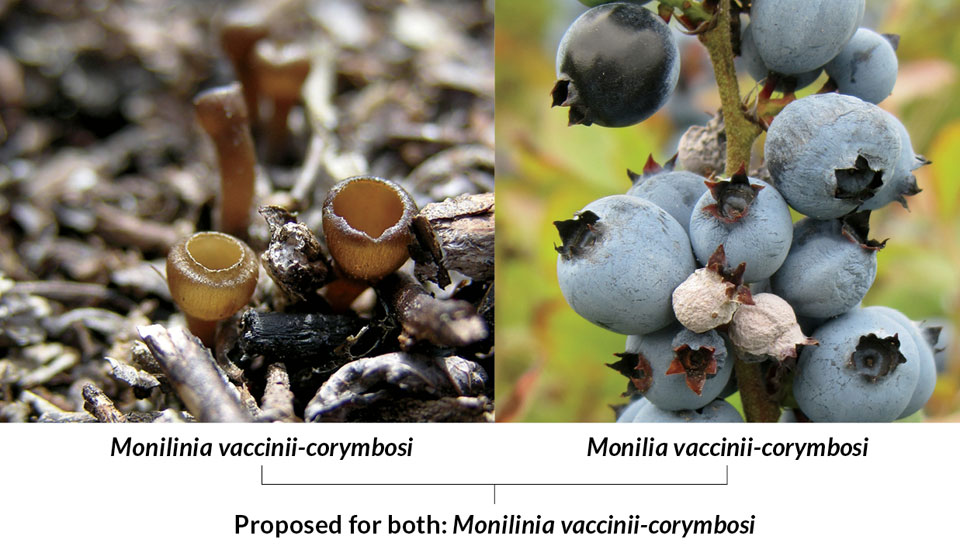
It’s a lot to deal with. But as dramatic as all the rethinking and renaming have been, some mycologists propose taking the implications of DNA analysis even further into the taxonomic frontier. Systems for processing massive quantities of genetic material allow mycologists to explore communities of fungi they can’t identify in lab dishes. Soils, swamp glop, animal rumens and even human feet yield genetic signatures of distinctive fungi that no microscope has ever focused on. If DNA can sort out fungal species, then why not use it for naming in cases where no specimen can be found?
Vexed by how to settle on one name for a confusing multitude of physical forms, mycologists may soon have to figure out how to name a thing when there is nothing to see at all.
Editor’s Note: This story was updated June 4, 2014, to correct the credit for the photo of Cordyceps takaomontana.
